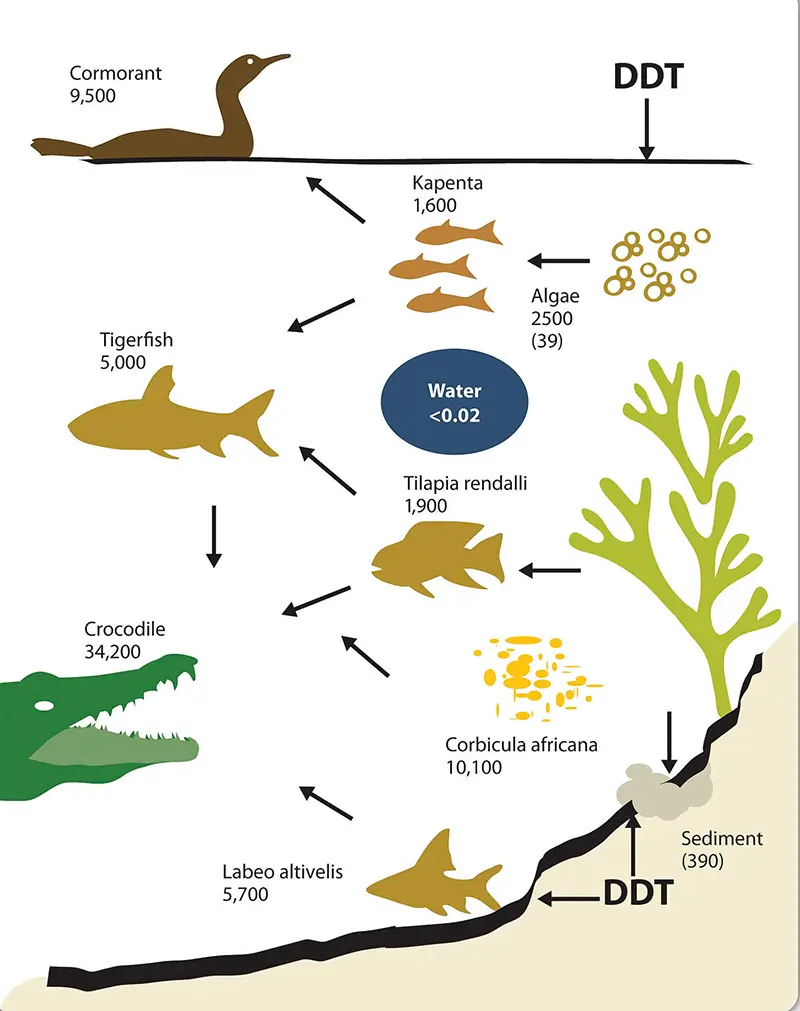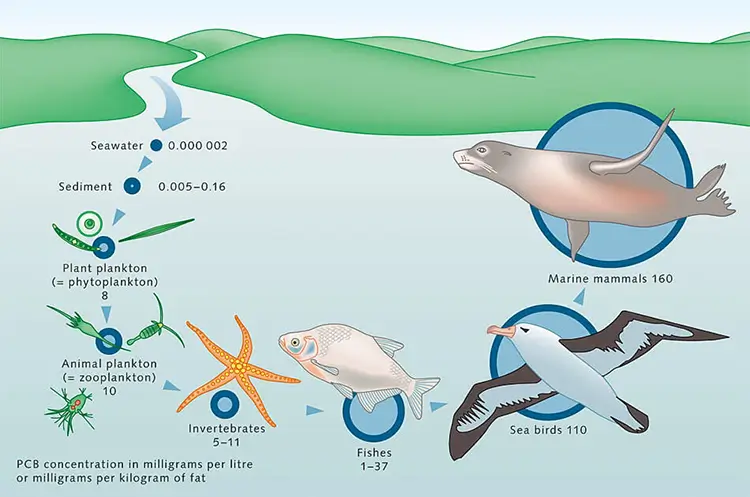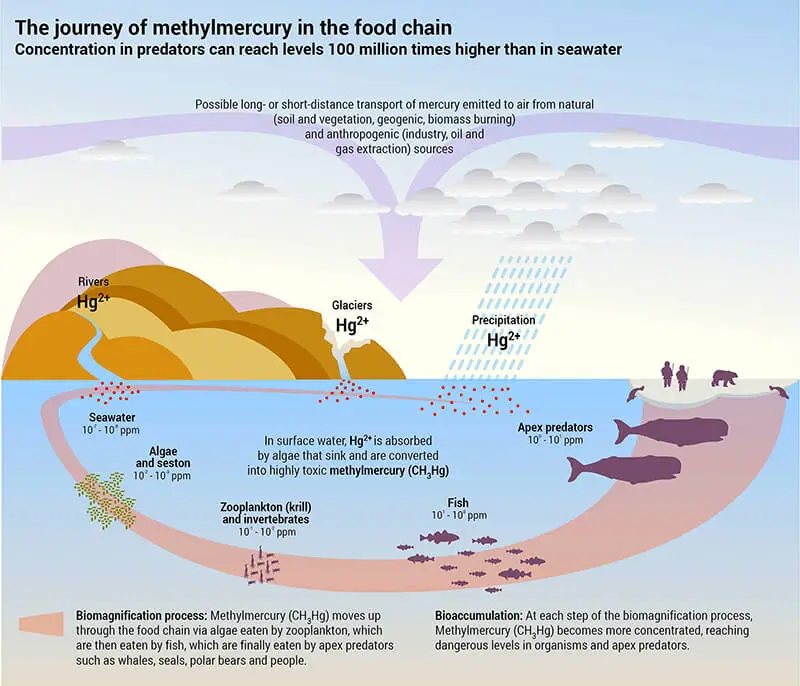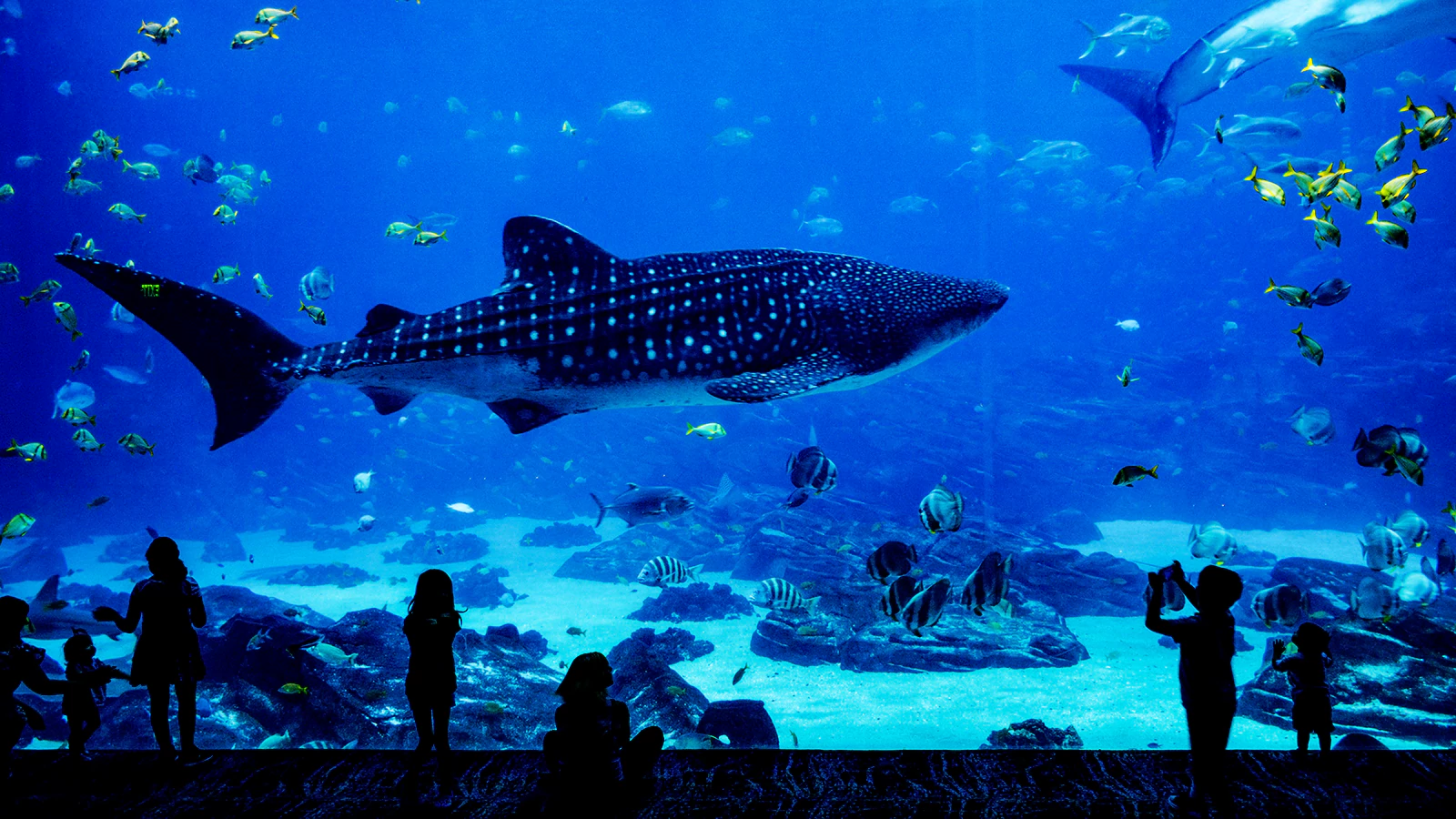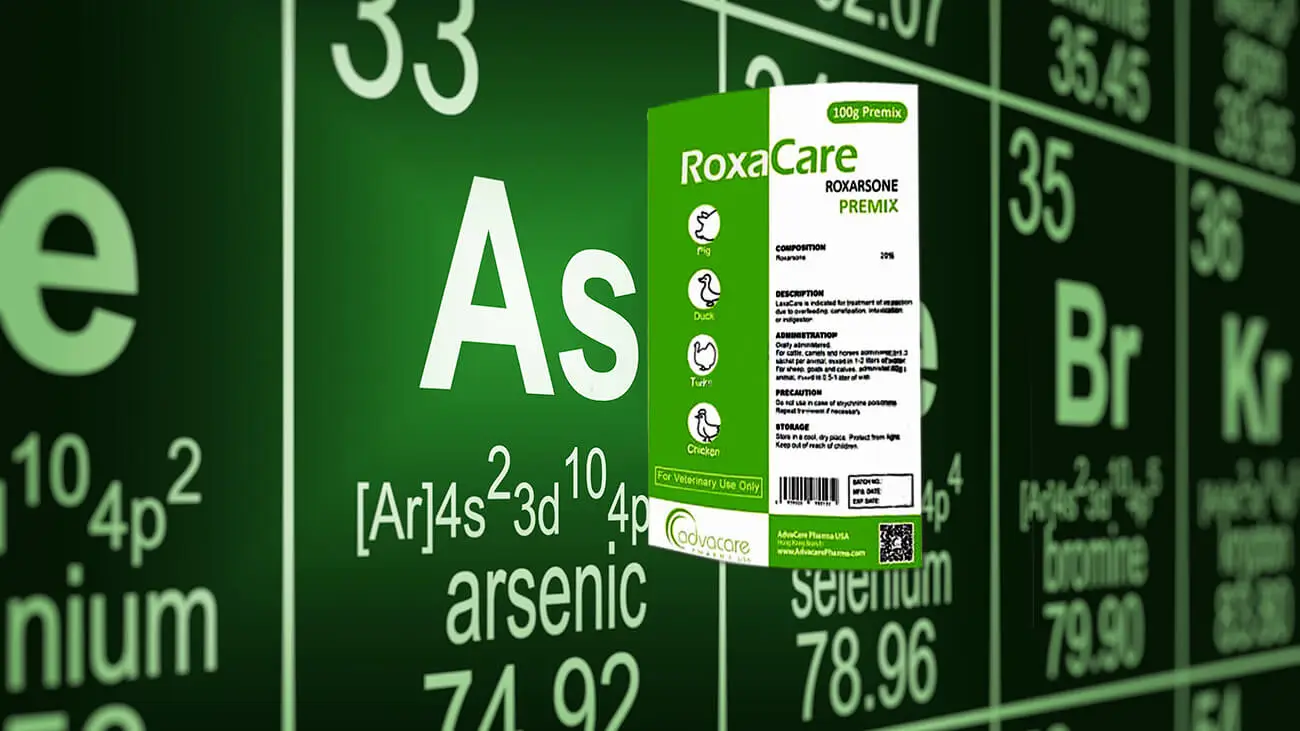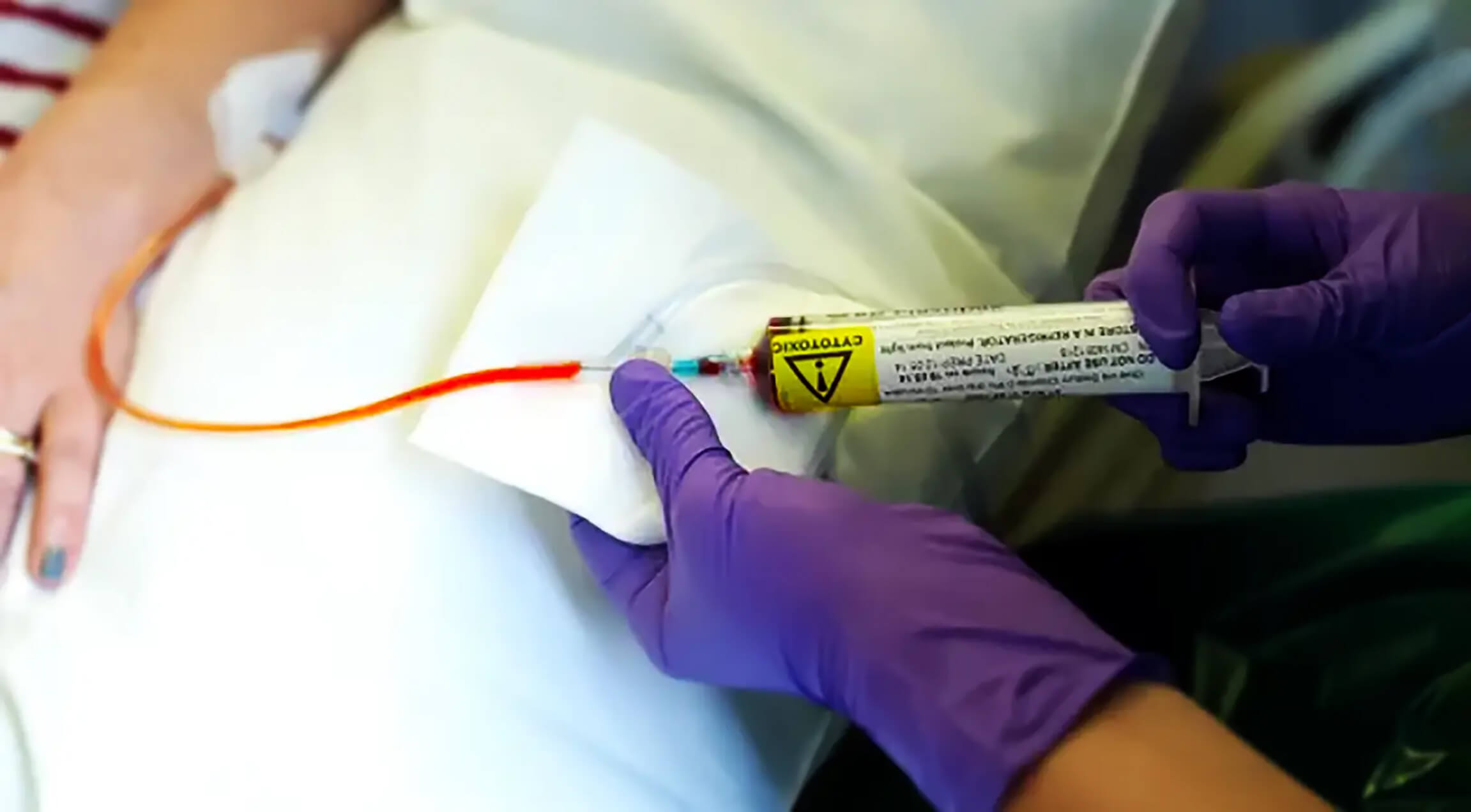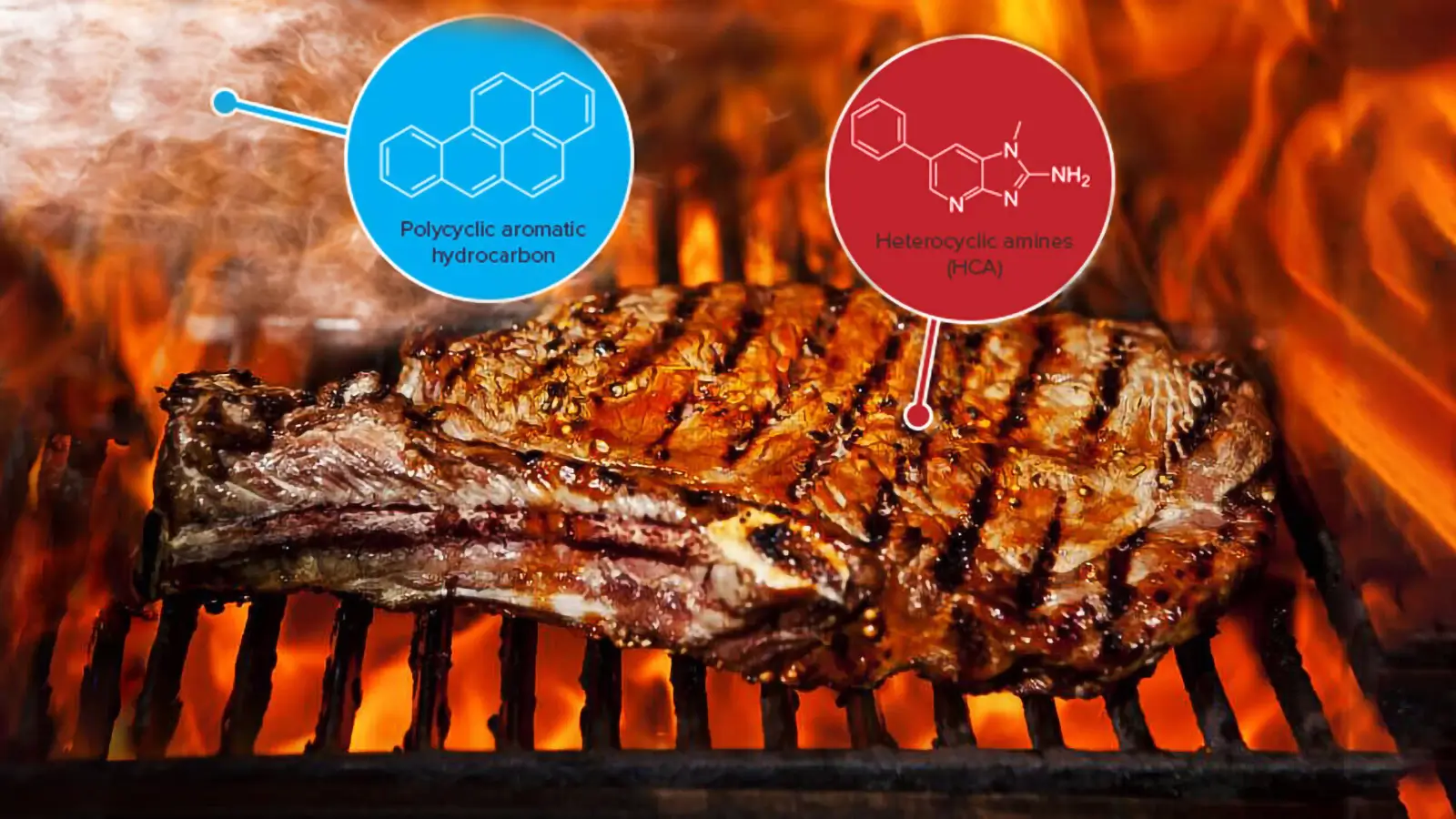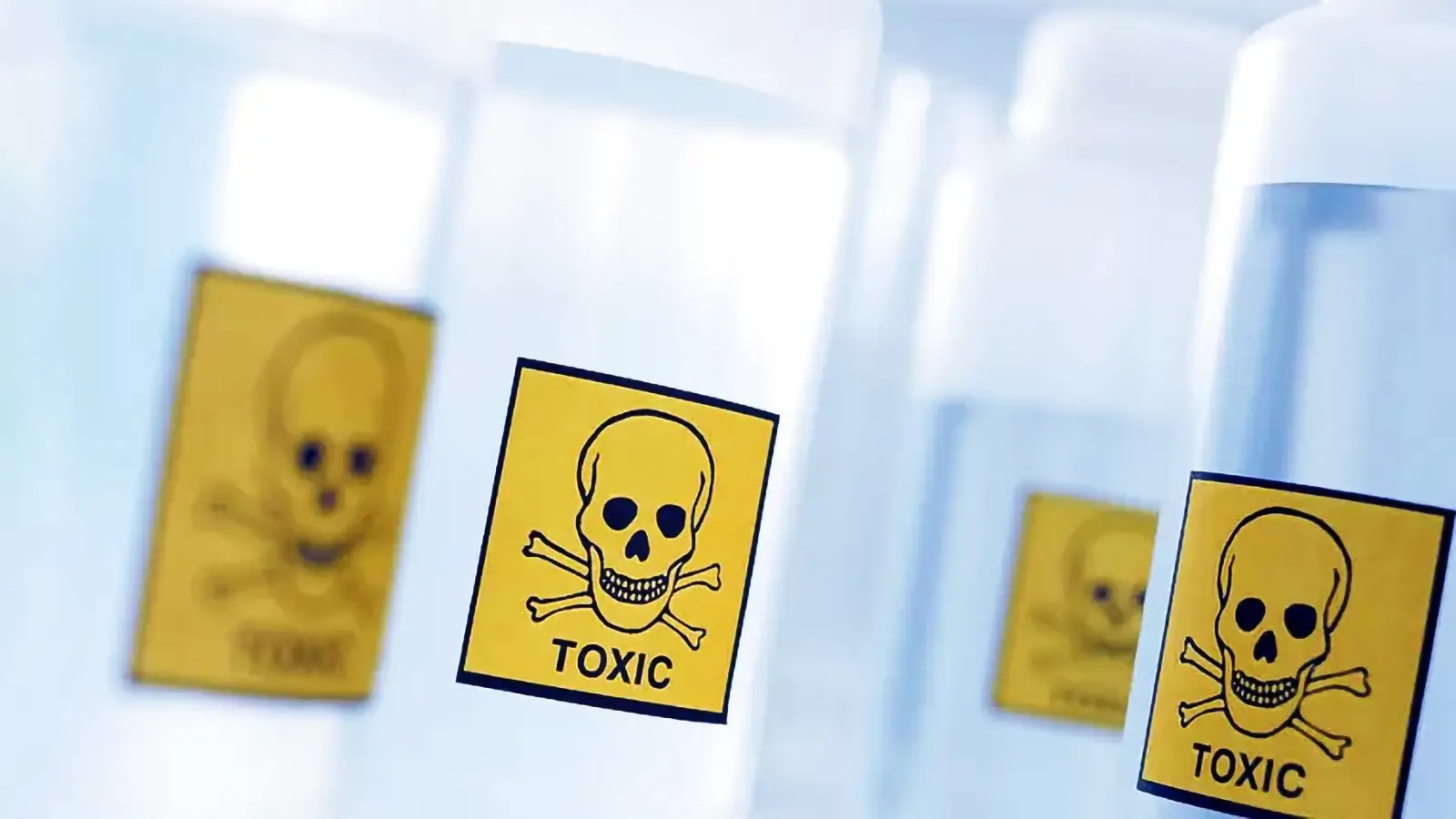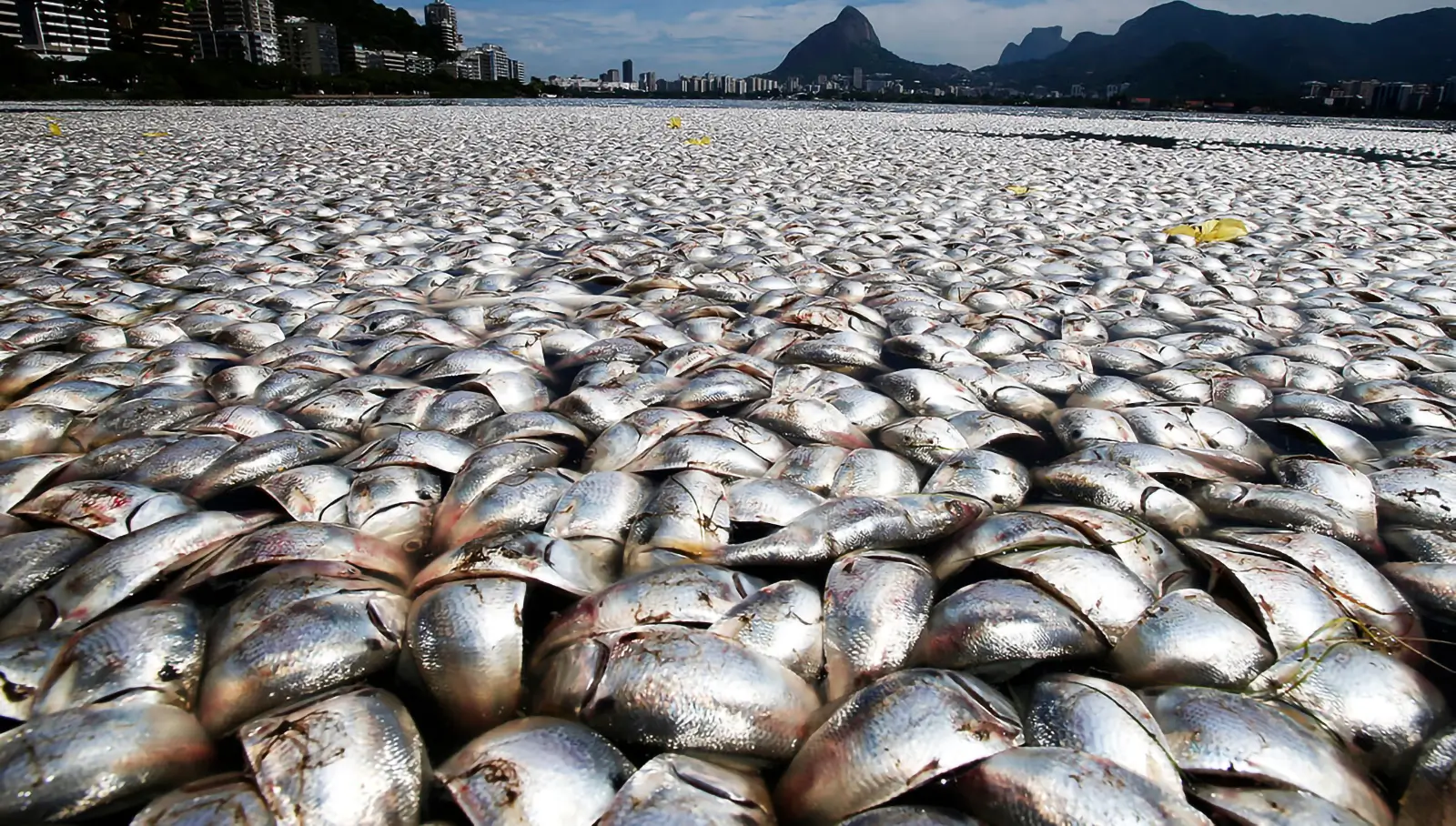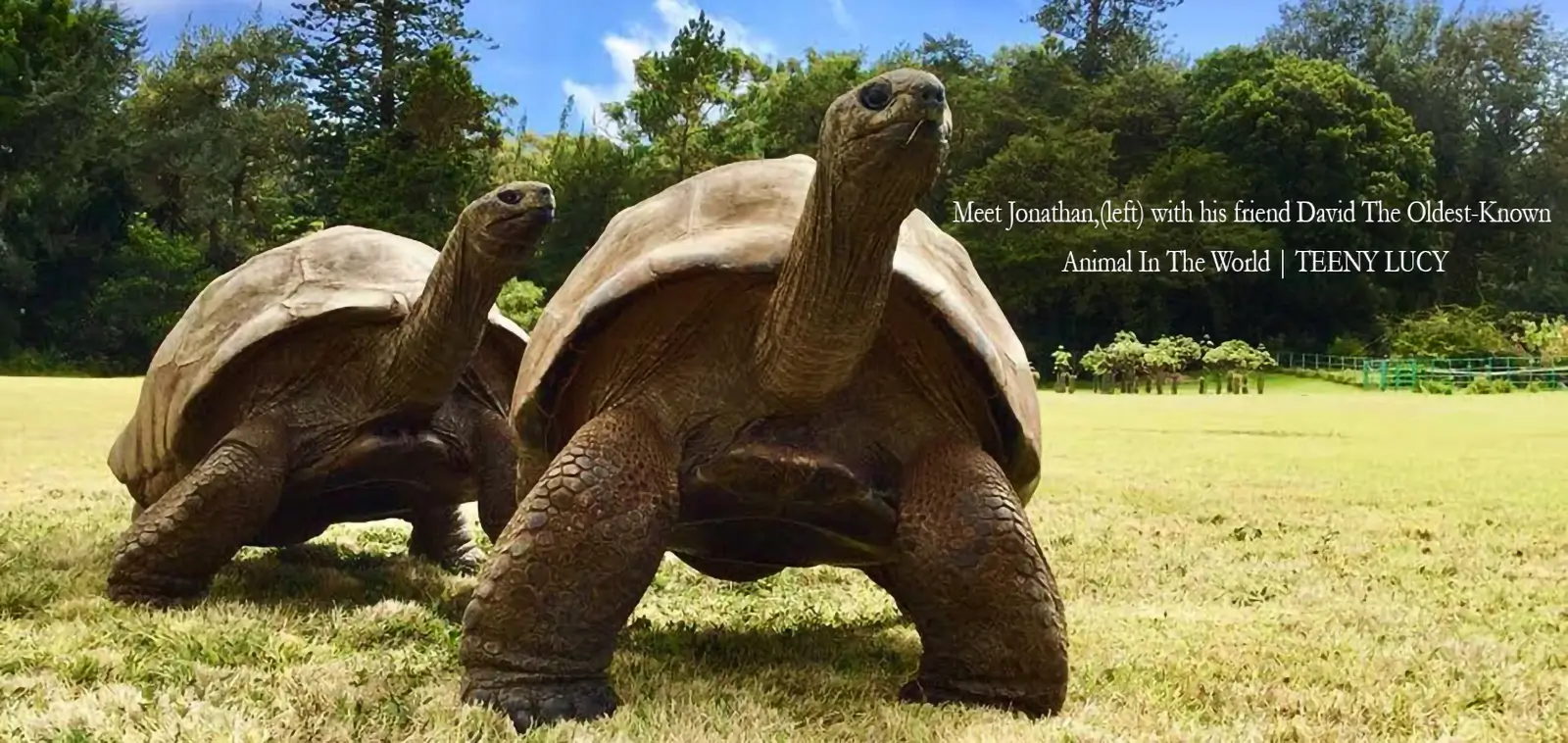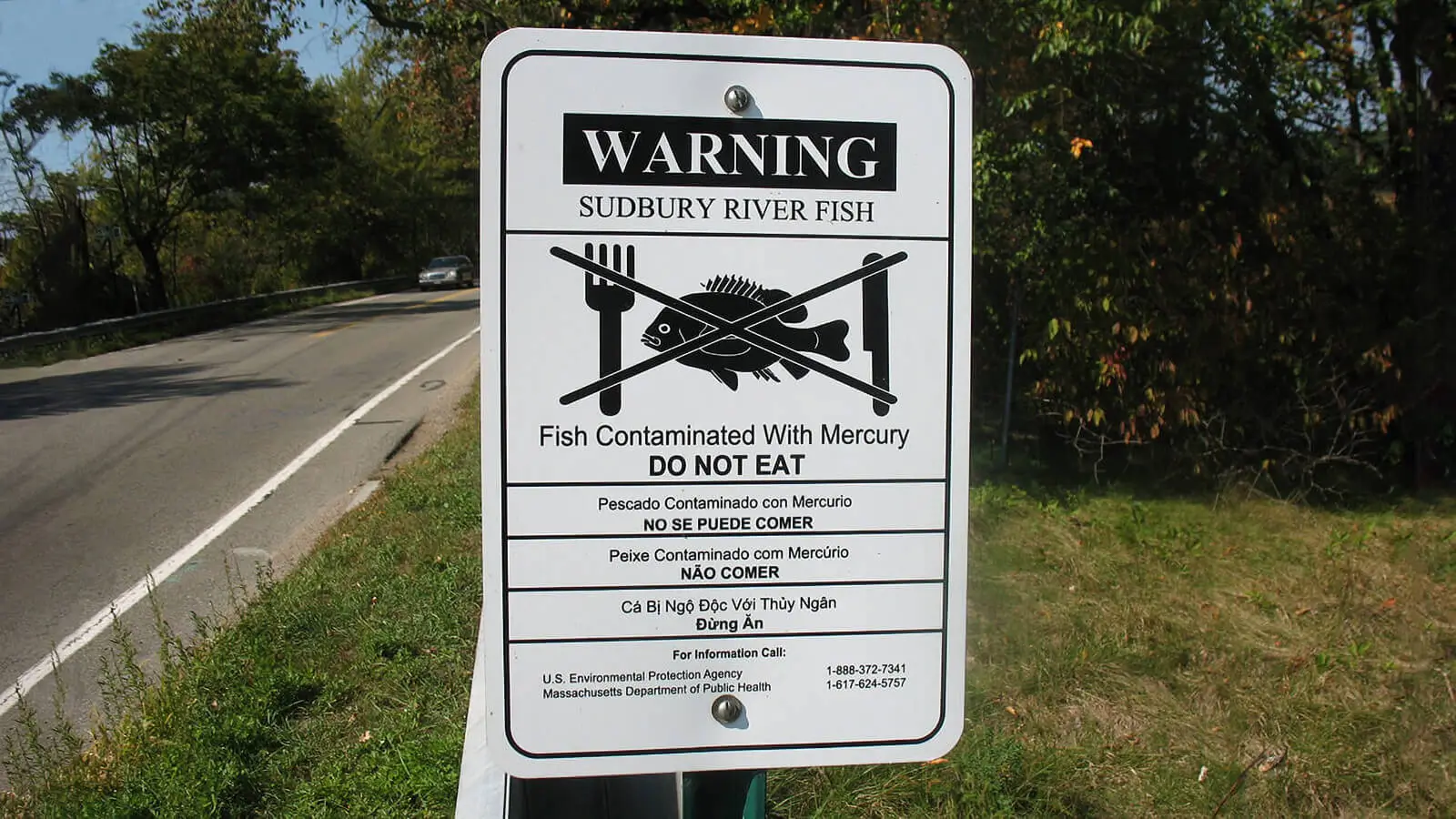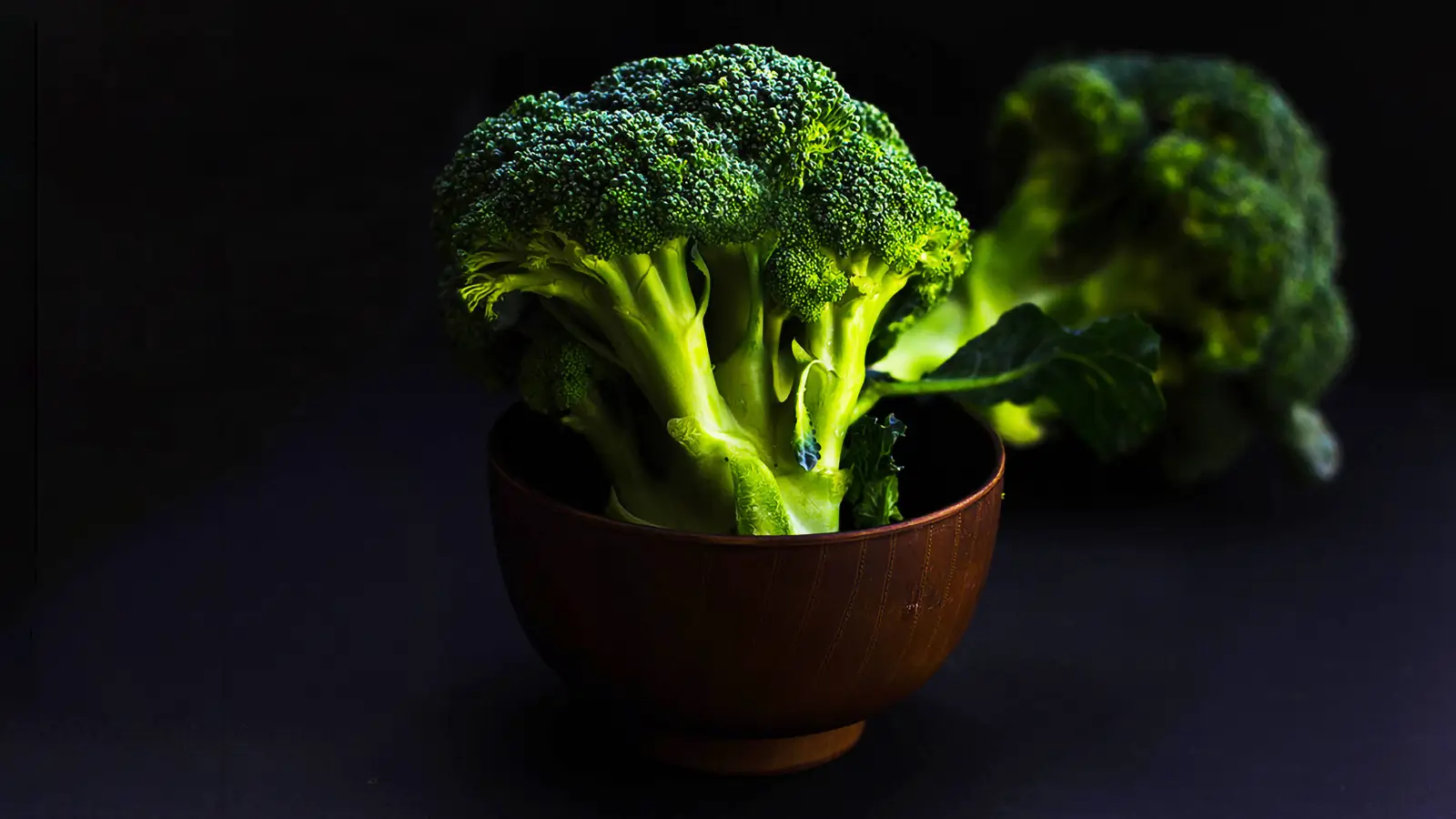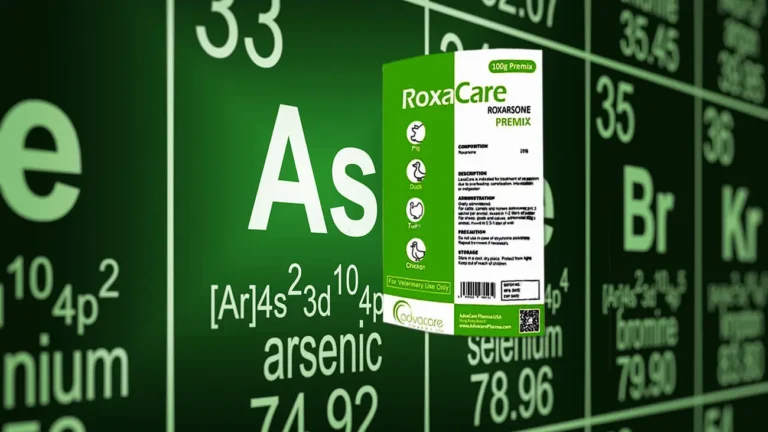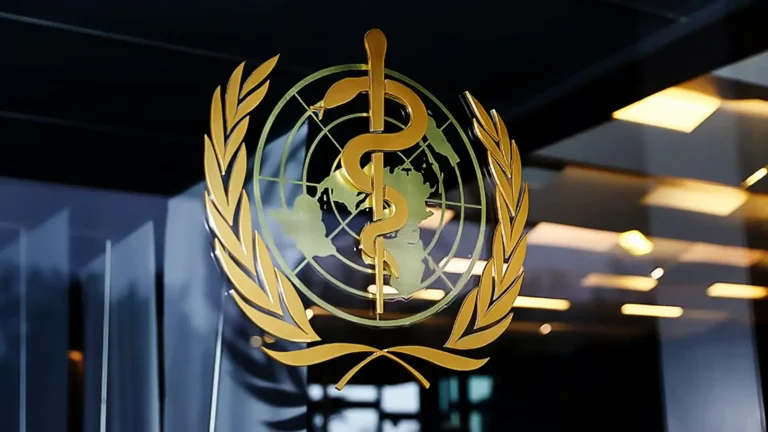Environmental toxicity- It is just a food chain
Environmental toxicity is the bioaccumulation of toxins. Organisms are filters. But there is one more even worse process called biomagnification in food chain.
Milos Pokimica
Written By: Milos Pokimica
Medically Reviewed by: Dr. Xiùying Wáng, M.D.
Updated June 9, 2023Environmental toxicology is the scientific study of the health effects of toxic chemical exposure in living environments. The term also refers to the management of environmental toxins and toxicity.
Contamination of the air, water, or soil with potentially hazardous substances can harm any individual or community. Contaminants are chemicals found in greater quantities than would occur naturally in the environment. These contaminants can enter our bodies through a variety of residential, commercial, and industrial sources. Mold, arsenic, and toxic algae blooms are examples of harmful environmental contaminants that can occur biologically.
| RANK | NAME |
|---|---|
| 1 | ARSENIC |
| 2 | LEAD |
| 3 | MERCURY |
| 4 | VINYL CHLORIDE |
| 5 | POLYCHLORINATED BIPHENYLS |
| 6 | BENZENE |
| 7 | CADMIUM |
| 8 | BENZO(A)PYRENE |
| 9 | POLYCYCLIC AROMATIC HYDROCARBONS |
| 10 | BENZO(B)FLUORANTHENE |
| 11 | CHLOROFORM |
| 12 | AROCLOR 1260 |
| 13 | DDT, P,P’- |
| 14 | AROCLOR 1254 |
| 15 | DIBENZO(A,H)ANTHRACENE |
| 16 | TRICHLOROETHYLENE |
| 17 | CHROMIUM, HEXAVALENT |
| 18 | DIELDRIN |
| 19 | PHOSPHORUS, WHITE |
| 20 | HEXACHLOROBUTADIENE |
When toxins get into the environment, they will end up in the water. Then through river systems eventually will end up in the ocean. They will get diluted, and there will be no problem. In time they will dissipate.
The short answer is no.
Environmental toxicity is the bioaccumulation of toxins. Organisms are like filters. It is correct that concentrations of all of our heavy industry pollutants and drugs and other chemicals are low when measured directly in ocean water, but there is already mentioned phenomenon called bioaccumulation.
If the chemical is stable, it will end up in plankton, algae, and other organisms. If there is a substance in the environment, the organism will absorb it, leading to environmental toxicity and that is a process known as bioaccumulation. When we breathe, if there is smoke in the air we will absorb it in the same manner as plankton or algae will absorb anything that is in the water. If the rate of absorption is faster than the rate and the ability of the organism for excretion, the substance will in time accumulate. A substance such as heavy metals for example or pesticides that remain unaffected in the environment and are stable for an extended period will get filtered by the organisms that live in that water. Because they have the tendency to be soluble in fat but not in water they accumulate in living organisms. Meaning they stick to the fat and other cells in the body and don’t want to leave.
Therefore, all the poisons that are in oceans and that are human-made and are heat resistant and chemically stable will bioaccumulate and reach a much higher concentration in organisms than in water. Organisms are like filters. They filter everything that exists in water good or bad. This is not good news for us. The situation would not be even so bad, but there is one more process called biomagnification. If we understand the food chain, the accumulation of toxins gets hundreds of times worse as we move up. Environmental toxicity becomes horrendous in modern times because of this. These fat-soluble toxins cannot be metabolized or broken down, and at the same time, they cannot be excreted thru the kidneys by urine because fat and water do not mix. The only way for the organism to get rid of them is by enzymatic activity, and if an organism lacks enzymes to degrade them, they will accumulate in fatty tissues. Most if not all of these chemicals are new and human-made and organisms do not have a mechanism to detoxify them because in evolution they never had to, until now. So what happens is that when small fish get eaten by big fish, all of their toxins get passed into the bigger fish. Fats and all toxins in them will be digested in the gut and will be absorbed into the organism of the predator where they will be accumulated even more. Since at each level of the food chain there is some degree of energy that is lost, to compensate a predator will consume a more significant number of prey, including all of their lipophilic toxic substances.
Concentration may be insignificant in oceans, but then water starts to get filtered by algae. Two main groups of substances biomagnify. Both are lipophilic and are not easily degraded. One of them is these new chemicals that are unknown to the immune systems of animals. Those substances are known as “persistent organic pollutants” or POP. They are called persistent because they do not degrade in the environment. Regular sewage water when entering the river or the ocean has no impact on a large scale because it goes through the natural process of degradation and disappears. Only artificial human-created unnatural chemicals remain the persistent ones.
Besides POP there are metals. Metals are elements which means they are not living matter, so they are not biodegradable. Organisms that had thru evolution been exposed to high levels of some of these toxic metals that can be found naturally in the environment did in time develop defensive mechanisms to counter that exposure. The problem arises when there is an abrupt shift in an environment that are exposing these organisms to higher concentrations than what they are adapted to cope with. That will cause a buildup of these metals in the body that is unable to detoxify them and excrete them rapidly enough to prevent damage.
Mercury, for instance, is only present in minuscule amounts in seawater. When algae absorb seawater, everything in it including mercury will stick and won’t leave. Algae in some sense are acting like a seawater filtration system. Mercury will get absorbed by algae (generally as methylmercury). That filtering will start the process of bioaccumulation. Any species that will eat algae will also eat all the mercury in it. That will result in an ever-increasing concentration and buildup in the adipose tissue of successive trophic levels with the ever-increasing level of toxicity all the way up to larger fish. When we or any other predatory species eat those large fish, we will also consume all of the accumulated mercury. As bioaccumulation increases the concentration level in the predatory fish or birds will be much higher and in some cases severely toxic. For instance, herring contains mercury concentration at approximately 0.01 parts per million (ppm). Top predators like a shark will have it at even higher than 1 ppm. How did mercury even end up in the seawater? Inorganic mercury is found in the ground, and it gets released by gold mining and the primary production of non-ferrous metals. The more substantial contributor is fossil fuel burning. When coal or oil is burned it will be released into the atmosphere then it will be washed by rain. Thru river streams eventually, it will end up in the ocean. Once in the ocean, it never leaves for eternity. It does not biodegrade.
The only possible solution for environmental toxicity is to go lower on the food chain. Meaning eating vegan whole-plant foods. People don’t realize that animal feed is also filled with pesticides and that in the fat tissues of farmed animals there is an accumulation of toxins as well. Around 70 percent of all pesticides people consume in the standard American diet come from fat from animal products, not from sprayed fruits and vegetables that you need to wash to remove the residue. We cannot wash the pesticide off the meat. We need to go low on the food chain to avoid it altogether. For example, krill oil should be purer than full-blown fish oil. Krill have a high mortality rate and live short and are low on the food chain so they would not have as many pollutants. Going all the way to sea vegetables is the best course without supplementation especially because we can get more other minerals like iodine and phytochemicals when eating sea vegetables in a salad than just taking algae-based or krill-based DHA supplements. Our oceans are by now so polluted that even low-level organisms can be contaminated. Especially after algae blooms and all of the neurotoxins that this form of algae can create.
I used to like to eat squids on a regular basis. I considered them healthy because they have a low level of fat in them. I considered them to be the purest protein actually from all animals. I liked to compare them to egg whites. I was a regular protein kid from the gym. Squids have a high reproduction rate and should not be contaminated, except their inner organs actually are and the older the squid, the more cadmium can accumulate (Kim et al., 2013). Cadmium poisoning cases something called Itai-Itai disease (itai-itai byo, “it hurts-it hurts disease”) was the name given to the mass cadmium poisoning of Toyama Prefecture, Japan, starting around 1912. Cadmium is very toxic. The discovery of small amounts of cadmium in McDonald’s “Shrek Forever After” drinking glasses resulted in fear and anger. This led to a nationwide recall over the dangers that this toxic metal could affect young children. The biggest problem with cadmium is that it has a tendency to accumulate in the body. Our bodies have a hard time excreting it so that is why it will accumulate and generate toxicity and carcinogenic effects.
The logical conclusion from all of this is that even the creatures on the lower levels of the food chain that have a high level of reproduction can in a short period accumulate heavy metals and a whole variety of other toxins that we do not know about. Squid meet might be clean for now if we cut out the inner organs and chuck them out but what about all the other stuff that I did not research? Is it possible to research every aspect of the food that we consume? I can only go logically and cannot do nutrition research for every single thing. I used cadmium and mercury here just as an example. Good old led poisoning plus the entire periodic table can be added to the list, and so far this is just metals. The wide variety of other chemical pollutants is also a concern. Even polar bears now have renal lesions, reduced bone mineral density, fatty liver, and chronic inflammation due to food poisoning (Sonne et al., 2005). The dolphins too (Vetter et al., 2001).
Organohalogen compounds are PCB congeners, DDT and metabolites, chlordane-related compounds, and so on. The effect of POP on human health and also on the environment as well is real and even if we think that it is something we can ignore the situation is not as such. The international community made the intention to restrict production at the Stockholm Convention on Persistent Organic Pollutants in 2001. However, the real story is that we cannot. They are an essential part of modern agriculture and different type of industries. Not everything can be recycled and purified. POP can evaporate too and enter into the atmosphere. Because they are resisting breakdown reactions in the air and are stable, they can travel long distances. Then they will fall and be re-deposited. This results in an accumulation of POP in areas far from where they have been used or emitted. They can reach as far as Antarctica and the Arctic Circle. We do not have a clean life anymore because there is no natural way to produce food organically for billions of people on the planet. Some of the most known POP for example Polychlorinated biphenyls (PCBs), Dioxins, and Dichlorodiphenyltrichloroethane (DDT). PCBs are used in plastics, as additives in paint, in electrical transformers, and capacitors, in carbonless copy paper, and as heat exchange fluids. So no plastic and electronics without them. PCBs are poisonous to fish at high dosages, and correlated with spawning failure at low doses. In humans, PCBs are associated with immune suppression and sterility, and most exposure comes from food. Today one in six couples has trouble conceiving a baby. The number of couples attempting therapeutic methods due to the problem of natural conceiving has risen dramatically in the post-WW2 period. A number of 15% of couples that are sterile are more substantial than in the past for example 100 years ago. Sperm counts in the average male have fallen by almost half in the past 60 years. Fertility is lower in all men and women, and as a result 1 in 6 couples are sterile. Many experts blame this fall on the increase in environmental chemicals that have weak estrogen effects, such as DDT and PCB. An increase in estrogen levels in the general water supply, due to the use of oral contraceptive pills, has also been implicated. There are many chemicals in this world today.
In this study (Rozati et al., 2002) they measured the correlation between sperm count and environmental estrogens. When they talk about environmental toxicity estrogens, they do not mean phytoestrogens made by plants but xenoestrogens, pesticides like PCP, DDT, or BPA from plastic, and so on. Most of them were found in fish. Urban fish eaters have the highest average PE and PCB levels. In infertile men, the total motile sperm counts are correlated with their xenoestrogen exposure. They also found substantial correlations between PCB levels and ejaculate volume, motility, vitality, and osmoregulatory capacity. Higher PCB levels were associated with sperm damage (p < 0.05). Phthalates were also significantly higher in infertile men with higher phthalate levels being correlated with sperm DNA damage. Both PCB and phthalate concentrations were correlated with a decrease in total mobile sperm counts as well. The conclusion was that PCBs and PE (phthalate esters) might be influential in the deterioration of semen quality in the general population with particular attention being made as a contributing factor to infertility in men. Sperm count was something in the line of 10 (mean motile) live mobile count in millions for fish-eaters and above 80 for vegetarians. Around eight times the difference. If fish does not make you sterile by lowering sperm count, it will cause reduced testosterone and other pro-estrogen diseases both in men and in a woman too like breast cancer, early menopause, endometriosis, and thyroid hormone problems. Many of the pesticides act similarly and have endocrine disruption potential. For example, we know that hypospadias, a birth defect of the penis where the opening is not at the tip but on the other side of the penis is caused by the fungicide Vinclozolin (Vilela et al., 2007). Do you still think that eating wild-caught salmon is health-promoting?
The real problem is that a number of chemicals just grow and grow. Most of them are secret. We do not have research on what they do, and nobody is talking. In the period from 2001, the Stockholm Convention list has been expanded to include polycyclic aromatic hydrocarbons (PAH) or at least some of the most dangerous ones and also brominated flame retardants and some other compounds. Moreover, all of this is just what is tested. We need to understand that nobody will finance the research into the toxicity of different industrial chemicals that are found in the environment primarily in the long run because that is not what is going to increase the profits. Quite the opposite it will just make business more expensive. There are a lot of undeveloped countries that don’t care about long-run destruction. Most of the impoverished nations are going to do anything just to survive, and that is a breeding ground for corruption, and companies love that.
Most heavy industries dump their toxic waste in third-world countries without regulation and give some money on a side to some corrupted politicians even to this day. Some of the waste is transported from Western nations and dumped there also. There is a market for this. If you have something that is too expensive to get rid of in the US, transport it to third-world countries and dump it. No regulations. Besides dumping, there is one even worse trend. Companies that choose to invest in foreign countries and by this I mean forms of substantial greenfield investment tend to relocate to countries where they could have the lowest cost of manufacturing, and that means the lowest environmental standards or the weakest enforcement. The pollution heavens sort of speak. Only waste from industries that cannot be allocated is transported and dumped. Or I would just ask this, what happens at the individual personal level? How many regular people will dump their mercury electricity-saving light bulbs in the regular dumpster? Not just in the U.S. but all over the globe. The mercury from light bulbs will eventually be released into the environment. Alternatively, people are also dumping hazardous waste in town dumps to avoid paying the fees charged by waste transporters. Everyone does it, especially people with high credit debt. EPA began regulating hazardous waste in 1976. Toxic waste dumps that are holdovers from the era before 1976 are still here and pose a threat. Also, there is the practice of illegal dumping that has created a large number of waste sites.
The only possible solution for avoiding toxicity is to go lower on the food chain.
References:
- Kim, B. M., Lee, S. Y., & Jeong, I. H. (2013). Influence of squid liver powder on accumulation of cadmium in serum, kidney and liver of mice. Preventive nutrition and food science, 18(1), 1–10. https://doi.org/10.3746/pnf.2013.18.1.001
- Sonne, C., Dietz, R., Leifsson, P. S., Born, E. W., Letcher, R. J., Kirkegaard, M., Muir, D. C., Riget, F. F., & Hyldstrup, L. (2005). Do organohalogen contaminants contribute to histopathology in liver from East Greenland polar bears (Ursus maritimus)?. Environmental health perspectives, 113(11), 1569–1574. https://doi.org/10.1289/ehp.8038
- Vetter, W., Scholz, E., Gaus, C., Müller, J., & Haynes, D. R. (2001b). Anthropogenic and Natural Organohalogen Compounds in Blubber of Dolphins and Dugongs ( Dugong dugon ) from Northeastern Australia. Archives of Environmental Contamination and Toxicology, 41(2), 221–231. https://doi.org/10.1007/s002440010241
- Rozati, R., Reddy, P. P., Reddanna, P., & Mujtaba, R. (2002). Role of environmental estrogens in the deterioration of male factor fertility. Fertility and sterility, 78(6), 1187–1194. https://doi.org/10.1016/s0015-0282(02)04389-3
- Vilela, M. L., Willingham, E., Buckley, J., Liu, B. C., Agras, K., Shiroyanagi, Y., & Baskin, L. S. (2007). Endocrine disruptors and hypospadias: role of genistein and the fungicide vinclozolin. Urology, 70(3), 618–621. https://doi.org/10.1016/j.urology.2007.05.004
- Zennegg M. (2018). Dioxins and PCBs in Meat – Still a Matter of Concern?. Chimia, 72(10), 690–696. https://doi.org/10.2533/chimia.2018.690
Related Posts
Do you have any questions about nutrition and health?
I would love to hear from you and answer them in my next post. I appreciate your input and opinion and I look forward to hearing from you soon. I also invite you to follow us on Facebook, Instagram, and Pinterest for more diet, nutrition, and health content. You can leave a comment there and connect with other health enthusiasts, share your tips and experiences, and get support and encouragement from our team and community.
I hope that this post was informative and enjoyable for you and that you are prepared to apply the insights you learned. If you found this post helpful, please share it with your friends and family who might also benefit from it. You never know who might need some guidance and support on their health journey.
– You Might Also Like –

Learn About Nutrition
Milos Pokimica is a doctor of natural medicine, clinical nutritionist, medical health and nutrition writer, and nutritional science advisor. Author of the book series Go Vegan? Review of Science, he also operates the natural health website GoVeganWay.com
Medical Disclaimer
GoVeganWay.com brings you reviews of the latest nutrition and health-related research. The information provided represents the personal opinion of the author and is not intended nor implied to be a substitute for professional medical advice, diagnosis, or treatment. The information provided is for informational purposes only and is not intended to serve as a substitute for the consultation, diagnosis, and/or medical treatment of a qualified physician or healthcare provider.NEVER DISREGARD PROFESSIONAL MEDICAL ADVICE OR DELAY SEEKING MEDICAL TREATMENT BECAUSE OF SOMETHING YOU HAVE READ ON OR ACCESSED THROUGH GoVeganWay.com
NEVER APPLY ANY LIFESTYLE CHANGES OR ANY CHANGES AT ALL AS A CONSEQUENCE OF SOMETHING YOU HAVE READ IN GoVeganWay.com BEFORE CONSULTING LICENCED MEDICAL PRACTITIONER.
In the event of a medical emergency, call a doctor or 911 immediately. GoVeganWay.com does not recommend or endorse any specific groups, organizations, tests, physicians, products, procedures, opinions, or other information that may be mentioned inside.
Editor Picks –
Milos Pokimica is a health and nutrition writer and nutritional science advisor. Author of the book series Go Vegan? Review of Science, he also operates the natural health website GoVeganWay.com
Latest Articles –
Top Health News — ScienceDaily
- Scientists find a safer way for opioids to relieve painon January 6, 2026
Researchers at USF Health have discovered a new way opioid receptors can work that may lead to safer pain medications. Their findings show that certain experimental compounds can amplify pain relief without intensifying dangerous side effects like suppressed breathing. This research offers a fresh blueprint for designing opioids that last longer, work better, and pose fewer risks. It also opens doors to safer treatments for other brain disorders.
- Why multiple sclerosis slowly steals balance and movementon January 6, 2026
Many people with multiple sclerosis struggle with balance and coordination, and this study uncovers a hidden reason why. Researchers found that inflammation in the brain disrupts the energy supply of vital movement-controlling neurons. As their mitochondria fail, these cells weaken and eventually die, worsening motor problems over time. Protecting brain energy systems could open the door to slowing these symptoms.
- A simple drug pair may succeed where liver fibrosis treatments failedon January 6, 2026
Scientists have found that combining silybin with carvedilol works far better against liver fibrosis than either drug alone. The duo targets the root drivers of liver scarring, sharply reducing collagen buildup and liver damage in experimental models. Importantly, both drugs are already approved and commonly prescribed. That makes this discovery especially promising for rapid clinical translation.
- Scientists discover “migrions,” a viral shortcut that supercharges infectionon January 6, 2026
Scientists have uncovered a surprising viral shortcut that turns moving cells into delivery vehicles for infection. Instead of spreading one virus at a time, infected cells bundle viral material into large structures called Migrions and pass them directly to new cells. This collective delivery jump-starts viral replication and boosts disease severity. The finding reveals a migration-based route of viral spread that defies classic models of infection.
- Flu drug once blamed for seizures in kids gets a surprising reversalon January 6, 2026
A long-running debate over Tamiflu’s safety in children may finally be settled. Researchers found that influenza, not the antiviral medication, was linked to serious neuropsychiatric events like seizures and hallucinations. Even more striking, kids treated with Tamiflu had about half the risk of these events compared to untreated children with the flu. The results suggest the drug may be protective rather than harmful.
- Nearly all women in STEM secretly feel like impostorson January 6, 2026
Nearly all women in STEM graduate programs report feeling like impostors, despite strong evidence of success. This mindset leads many to dismiss their achievements as luck and fear being “found out.” Research links impostorism to worse mental health, higher burnout, and increased thoughts of dropping out. Supportive environments and shifting beliefs about intelligence may help break the cycle.
- Think you make 200 food choices a day? Think againon January 5, 2026
The idea that we make over 200 unconscious food choices a day has been repeated for years, but new research shows the number is more illusion than insight. The famous figure comes from a counting method that unintentionally exaggerates how many decisions people really make. Researchers warn that framing eating as mostly “mindless” can undermine confidence and self-control. A more realistic view focuses on meaningful choices—and practical strategies that make healthy decisions easier.

